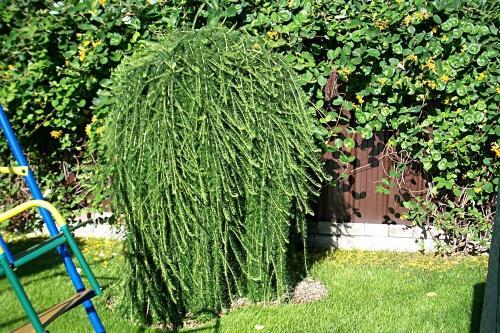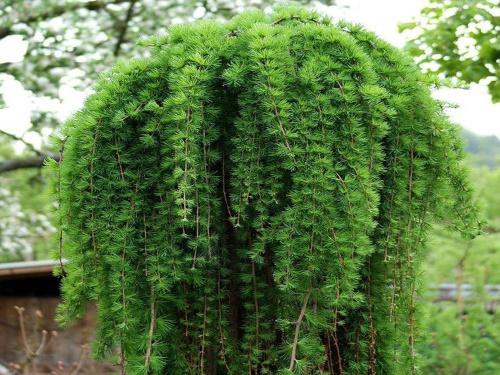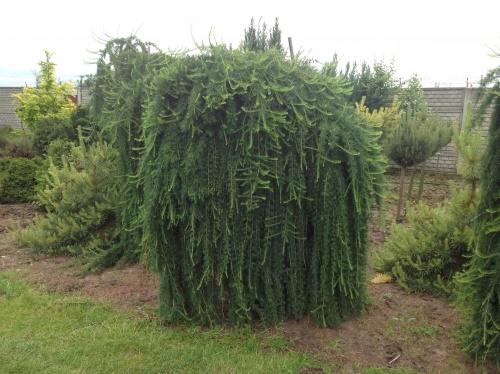Weeping larch with a hanging crown - an original tree for every garden
 Larch is a beautiful and unique representative of coniferous crops, which drops needles for the winter. Weeping larch with a hanging crown is especially popular among gardeners. If in nature these trees grow very large and tall, then weeping larches are more compact. In addition, they have an original structure: the shoots do not tend to the sun, but hang down to the ground. Low trees with an openwork crown are an ideal solution even for a modest site. They will not take up much space, they will not shade neighboring plants, and they are not as capricious in their care as conifers.
Larch is a beautiful and unique representative of coniferous crops, which drops needles for the winter. Weeping larch with a hanging crown is especially popular among gardeners. If in nature these trees grow very large and tall, then weeping larches are more compact. In addition, they have an original structure: the shoots do not tend to the sun, but hang down to the ground. Low trees with an openwork crown are an ideal solution even for a modest site. They will not take up much space, they will not shade neighboring plants, and they are not as capricious in their care as conifers.
Weeping larch with a hanging crown: popular species
Weeping forms have the following varieties of larch:
- European. The owner of an even trunk and falling branches covered with long emerald needles. The bark of young trees is gray, but turns brown with age. Prefers rocky terrain. Beautiful weeping varieties: Corley with a rounded crown and almost no trunk and Stiff Whipping with hanging shoots on the trunk. The most compact trees are obtained after grafting. Their height does not exceed 1.5 m with a crown diameter of only 1 m.

- Japanese. It has a pyramid-shaped crown, but the branches grow horizontally and fall down. A characteristic feature of the species: the needles acquire a bluish tint in summer. In addition, it turns yellow later in the fall. The most spectacular variety is the Japanese Pendula larch. It grows up to 6 m in height, forming a weeping crown up to 1.5 m in diameter.

Features of growing weeping larch in the garden
It is necessary to plant larch in a well-lit place. It can grow in almost any soil except waterlogged. But if the soil is too dense, you should definitely make good drainage. Otherwise, the root system will start to hurt, and the tree will disappear.
Despite the intolerance of waterlogged soil, larch is demanding for watering. Particular attention should be paid to young trees and water them regularly. Adult specimens require such attention only during a drought.
If the needles of the tree have begun to turn yellow, but it is not yet the season of "needles" - there is a lack of moisture.
Caring for a weeping beauty includes feeding and pruning. Fertilize better with mineral complexes such as Kemir in the spring. At the same time, you can carry out shaping pruning. Shoots that “crawl out” from the crown are removed. If you need to make the crown more lush, the growth point is also trimmed. The appearance of lateral branches will be the result of shortening last year's shoots. Larch winters well, but it is better to cover young trees in autumn.